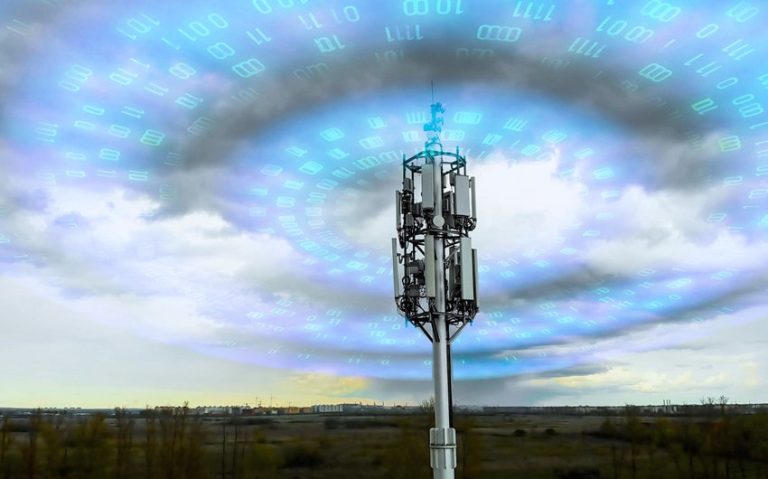Data centers play a crucial role in the modern digital world. They support the storage, processing, and management of vast amounts of data generated by businesses, governments, and individuals. As reliance on digital services and the internet grows, centers become increasingly important.
This text will describe the largest data storage in the world. These centers form the backbone of modern digital infrastructure, showcasing the immense scale and advanced technology required to support the ever-growing digital world.
Criteria for Measuring Largest Server Room Size
Evaluating the size of a data center involves several key criteria that reflect its physical and operational capacities:
• Area. The physical size of a data center, measured in square feet or square meters, serves as a primary indicator of its capacity. Larger facilities house more servers and related infrastructure, enabling greater processing and storage capabilities. For instance, the China Telecom Data Center in Inner Mongolia spans over 10.7 million square feet, ranking it among the largest in terms of physical space.
• Capacity. Capacity refers to the power capacity of the data center, typically measured in megawatts (MW). This metric indicates the maximum electrical load supported by the data center, correlating with the number of servers and the intensity of computational tasks handled. Northern Virginia, the largest data center market globally, has a combined power consumption capacity of 2,552 MW.
• Data storage volume. Data storage volume measures the amount of stored in a facility, usually in petabytes (PB) or exabytes (EB). This metric is crucial for understanding the center’s ability to handle large-scale data storage requirements. Specific data storage volumes are often proprietary information, but the vast infrastructure of facilities like Microsoft’s Quincy Data Center supports extensive cloud services like Azure and Office 365.
• Security. Security measures in a data center are vital for protecting sensitive data and ensuring operational integrity. These measures typically include biometric access controls, 24/7 monitoring, advanced fire detection and suppression systems, and secure server rack enclosures.
List of the Biggest Data Centers in the World
China Telecom Data Center (Inner Mongolia, China)
China Telecom built one of the largest server farm in the world, covering over 10.7 million square feet. This facility supports major Chinese companies and government institutions by handling enormous volumes. The cooler climate of Inner Mongolia helps reduce cooling costs and improve energy efficiency.
The center employs natural air cooling and liquid cooling systems. Renewable energy sources, such as wind and solar power, enhance the center’s sustainability. Security measures include biometric access controls, 24/7 surveillance, and advanced fire suppression systems.
The Citadel (Reno, Nevada, USA)
Switch operates The Citadel, covering approximately 7.2 million square feet. Located in the Tahoe Reno Industrial Center, the facility benefits from Nevada’s favorable tax environment and renewable energy resources. The Citadel uses modular center units for scalable expansion.
Its energy efficiency, with a PUE rating below 1.1, relies on cutting-edge cooling systems, including a patented hot aisle containment strategy. Security infrastructure includes perimeter fencing, mantraps, and armed security personnel. The Citadel serves Fortune 1000 companies, government entities, and cloud service providers.
Range International Information Hub (Langfang, China)
The Range International Information Hub in Langfang, China, spans approximately 6.3 million square feet. This data center supports sectors such as finance, healthcare, telecommunications, and e-commerce. The facility includes high-performance computing clusters, storage arrays, and networking equipment.
Advanced cooling solutions, such as indirect evaporative cooling and free cooling, maintain energy efficiency. Intelligent energy management systems optimize power consumption. Security measures include biometric access controls, 24/7 monitoring, and advanced fire detection and suppression systems.
Switch Super NAP (Las Vegas, Nevada, USA)
Switch’s Super NAP in Las Vegas covers around 3.5 million square feet and supports high-density computing environments. The facility uses Switch’s patented T-SCIF cooling system for efficient cooling. Redundant power sources and on-site power generation ensure uninterrupted operations.
Security measures include perimeter security, biometric access controls, and 24/7 surveillance. The facility’s network infrastructure provides low-latency connectivity to major internet hubs. One of the biggest data centers, Super NAP offers colocation, cloud hosting, and managed IT services.
Microsoft Data Center (Quincy, Washington, USA)
Microsoft’s center in Quincy, Washington, spans over 1.5 million square feet and supports services such as Azure, Office 365, and Dynamics 365. The Pacific Northwest location leverages abundant hydropower resources for a low carbon footprint. The facility uses adiabatic cooling systems and innovative airflow management to minimize energy consumption.
Renewable energy sources, such as wind and solar power, further enhance sustainability. Security measures include biometric access controls, perimeter security, and continuous monitoring. Redundancy and failover systems ensure high availability and reliability.
Apple’s Mesa Data Center
Apple’s Mesa Data Center in Mesa, Arizona, USA, supports Apple’s iCloud services and other online services. The facility spans approximately 1.3 million square feet and operates with high reliability to manage extensive data and service requests. It ensures smooth functioning of services like iCloud, Siri, and iTunes for millions of users worldwide.
The center runs entirely on renewable energy sources. Apple installed solar panels capable of generating 50 megawatts of power, supplemented by additional renewable energy projects in the area, to ensure a 100% renewable energy supply. This approach aligns with Apple’s environmental goals, reducing the carbon footprint and promoting sustainability.
The facility uses advanced water recycling systems designed to minimize waste. These systems allow one of the largest servers in the world to recycle millions of gallons of water annually, significantly reducing its overall water consumption. Apple’s water recycling efforts enable the Mesa Data Center to reuse up to 75% of its water on-site, contributing to the conservation of local water resources in the arid Arizona climate.
The largest data centers in the world play an essential role in supporting modern digital infrastructure. These facilities handle vast amounts of data and provide critical storage, processing, and management capabilities.
As reliance on digital services grows, the importance of these centers will increase, driving further investments in advanced technology and sustainable practices. Their diverse approaches to cooling, energy use, and security show the industry’s commitment to innovation and efficiency, ensuring robust support for the ever-expanding digital world.







